Q
How much is a Toyota Corolla?
The price of the Toyota Corolla varies depending on the model and year. Currently, the latest model (2024) of the Toyota Corolla 1.8L is priced approximately between RM137,000 and RM147,000, depending on the configuration. This model is equipped with a 1.8L naturally aspirated engine (140PS/172Nm) or a hybrid version (Toyota Corolla Hybrid), featuring a 7-speed CVT transmission and offering a range of body colors and interior options.
In the used car market, the prices for 2020-2023 models of the Corolla range from RM90,000 to RM120,000, with lower mileage and well-maintained vehicles commanding relatively higher prices. Compared to similar models like the Honda Civic (starting at RM130,000) and the Mazda 3 (starting at RM140,000), the Corolla is priced more affordably. Additionally, Toyota's longstanding reputation for durability and low maintenance costs makes it a popular choice among Malaysian consumers.
Moreover, the Corolla Hybrid version, which offers better fuel efficiency (official data of 4.3L/100km), is priced slightly higher, but it can lead to savings on fuel costs over the long term.
Special Disclaimer: This content is published by users and does not represent the views or position of PCauto.
Related Q&A
Q
Which model year of Toyota Corolla is the best?
There isn't an absolute best model year of Toyota Corolla. Each model year has its own advantages, and the choice depends on individual needs and budgets. The 2025 Toyota Corolla GR Sport is priced at RM 149,800, running on gasoline. In terms of power, its engine has a maximum horsepower of 139PS and a maximum power of 103kw. It is equipped with a 10 - speed CVT transmission. It has active safety features like lane - change assist and lane departure warning, as well as comfortable and technological configurations such as a 12.3 - inch color TFT dashboard and a 10 - inch capacitive touchscreen.
Several versions in 2023, such as the 1.8E, 1.8G, and GR Sport, also have their own highlights. The 1.8E is priced at RM 139,800 and provides a 5 - year warranty with unlimited mileage. The 1.8G, priced at RM 147,800, is equipped with an active safety system like automatic emergency braking. The 2023 GR Sport was priced at RM 152,800 but is now discontinued.
If you prefer the advanced technology, configurations, and a better driving experience, a newer model year might be more suitable. However, if your budget is limited, an older model can be a great choice as long as it meets your requirements.
Q
Is Toyota Corolla a 4WD vehicle?
No, models of Toyota Corolla are not all-wheel drive (AWD), but use a front-wheel drive (FWD) system. Front-wheel drive means that the engine only provides power to the front wheels. This layout is quite common in many vehicles because it's usually more fuel-efficient and offers good handling performance for daily driving on normal roads.
The advantage of front-wheel drive is that it simplifies the vehicle's drivetrain, reduces weight, and lowers costs. It also has good traction on both dry and wet roads. However, compared with all-wheel drive, its performance may not be good in extreme off-road or very slippery conditions. If you need a vehicle with better traction on challenging terrains like snow, mud, or uneven roads, an all-wheel drive vehicle might be a better choice. But for regular city and highway driving, the front-wheel drive Toyota Corolla can meet the needs of most consumers.
Q
How many models does Toyota Corolla have?
There are several different types of Toyota Corolla available for selection. Some common models include the 2025 Toyota Corolla GR Sport, the 2023 Toyota Corolla 1.8E, the 2023 Toyota Corolla 1.8G, the 2023 Toyota Corolla GR Sport, the 2020 Toyota Corolla Altis 1.8E, the 2020 Toyota Corolla Altis 1.8G, the 2019 Toyota Corolla Altis 1.8E, and the 2019 Toyota Corolla Altis 1.8G. Each model may vary in features, configurations, and prices. For example, the GR Sport version is usually equipped with more sporty styling elements and enhanced configurations. There may be differences between the 1.8E and 1.8G models in interior comfort features and technological advancement. This diversity allows consumers to choose the Corolla model that best suits their preferences and needs, whether for daily commuting, family use, or a more dynamic driving experience.
Q
What is the tank capacity of Toyota Corolla?
The fuel tank capacities of different models of the Toyota Corolla vary. For the models presented here, their fuel tank capacities are all 50 liters. The fuel tank capacity is very important for drivers when planning their trips. For example, during a long - distance journey, by knowing the fuel tank capacity, drivers can estimate the cruising range based on the vehicle's fuel consumption and reasonably arrange refueling. Meanwhile, different driving styles and road conditions can also affect the actual cruising range. Good driving habits such as driving smoothly and avoiding sudden acceleration and braking can effectively reduce fuel consumption and increase the actual driving distance of the vehicle based on the fuel tank capacity, making travel more comfortable.
Q
What is the best fuel for Toyota Corolla?
Toyota Corolla runs on gasoline, so the most suitable fuel for it is gasoline. Gasoline is a liquid fuel refined from petroleum, which can provide power for the vehicle's engine. Toyota Corolla is equipped with a gasoline engine and is designed to use gasoline as its energy source to ensure the normal operation of the engine and the performance of the vehicle. Different grades of gasoline vary in terms of anti - knock properties and other aspects. For the specific grade of gasoline suitable for the Toyota Corolla, you can refer to the vehicle's user manual. Following the suggestions in the manual when choosing the gasoline grade helps to maintain the engine in good condition and enables the vehicle to maintain good performance in power, fuel consumption, etc.
Q
What's the fuel consumption per kilometer of Toyota Corolla?
The fuel consumption of Toyota Corolla depends on various factors, such as driving style, road conditions, and vehicle load. Take the 2020 Toyota Corolla Altis 1.8E and the 2020 Toyota Corolla Altis 1.8G as examples. Their official combined fuel consumption is 7.7 liters per 100 kilometers. To calculate the fuel consumption per kilometer, we divide the fuel consumption per 100 kilometers by 100. So, the fuel consumption per kilometer is 7.7 ÷ 100 = 0.077 liters.
It should be noted that this is just the official data. In actual driving, if you drive smoothly, avoid sudden acceleration and sudden braking, and maintain a reasonable speed, the actual fuel consumption per kilometer may be lower. On the contrary, if you often drive in a hurry or drive in congested traffic, the fuel consumption per kilometer may be higher.
Q
How to improve the fuel efficiency of Toyota Corolla?
To improve the fuel efficiency of Toyota Corolla, you can adopt several strategies. First of all, develop a smooth - driving habit. Avoid sudden acceleration and hard braking because these actions will increase the engine's workload and consume more fuel. Instead, you should gradually accelerate when starting and smoothly decelerate when stopping. Maintaining a steady speed, especially on the highway, also works. For example, keep your speed within the range where the engine operates most efficiently. For many Corolla models, this range is approximately 60 - 90 kilometers per hour.
Secondly, choose high - quality fuel. Premium fuel usually has better combustion performance, which allows the fuel in the engine to burn more completely, reducing waste and improving fuel economy.
Thirdly, make sure your vehicle is well - maintained. Replace the engine oil regularly as recommended because fresh oil can reduce internal engine friction. In addition, ensure that your tire pressure is at the appropriate level; under - inflated tires will increase rolling resistance, thus increasing fuel consumption.
Finally, lighten the vehicle load. Remove any unnecessary items from the trunk or the interior of the vehicle because the extra weight will make the engine use more energy to drive the vehicle. By following these suggestions, you can enhance the fuel efficiency of your Toyota Corolla and save on fuel costs over time.
Q
How can I reduce the fuel consumption of my Toyota Corolla?
If you want to reduce the fuel consumption of Toyota Corolla, you can try the following methods. First, in terms of driving habits, you should drive at a constant speed and adjust your speed properly. Avoid sudden acceleration and hard braking, because such aggressive maneuvers require the engine to burn more fuel in a short period to generate power, thus increasing fuel consumption. Anticipate road conditions in advance. By estimating traffic conditions, you can gradually and evenly accelerate or decelerate earlier, which can improve fuel efficiency. When driving at high speeds, try not to open the windows, as an open window increases wind resistance, which will increase the resistance when the vehicle is moving. As a result, the engine needs to consume more fuel to maintain the speed.
When it comes to vehicle maintenance, you should regularly check the tire pressure to ensure it's normal. Incorrect tire pressure can increase rolling resistance and therefore fuel consumption. Service your vehicle regularly. Replace the air filter, engine oil, spark plugs, etc. according to the vehicle manufacturer's recommendations to ensure the normal operation of the vehicle's engine and good fuel economy.
In addition, reducing the vehicle's load by cleaning the interior and the trunk to lighten the vehicle weight also helps lower fuel consumption.
Q
Which model of Toyota Corolla is the most fuel efficient?
Currently, all the available Toyota Corolla models are fuel-powered vehicles. It's not possible to directly determine which model is the most fuel-efficient from the data. However, generally, hybrid models tend to have better fuel economy than pure fuel-powered vehicles. If there is a hybrid version of the Corolla, it might be the most fuel-efficient.
Toyota Corolla has always been a "star" model in terms of fuel efficiency. With its mature engine technology and excellent gearbox tuning, it can ensure full combustion of fuel. In the daily commuting conditions in the city, the combined fuel consumption per 100 kilometers is approximately between 5.5 and 6.5 liters. Moreover, the Corolla has low maintenance costs and high parts compatibility, which saves both worry and money in the later use. Therefore, It's a great choice for family cars.
Q
How far can Toyota Corolla travel on an empty fuel tank?
Generally speaking, when the fuel gauge shows an empty state, the Toyota Corolla can theoretically travel about 40 to 50 kilometers. However, this distance is affected by factors such as the vehicle brand, model, road conditions, and driving habits. For example, in congested urban traffic, frequent starting and stopping will increase fuel consumption, causing a shorter driving distance. On the highway, maintaining a relatively stable speed may allow the vehicle to travel a longer distance.
The fuel tank capacity of different years and versions of the Toyota Corolla is mostly 50L. When the fuel indicator lights up, there is usually 5 - 10 liters of fuel left in the vehicle. But this figure is not always accurate. You can check the vehicle manual for specific information. It should be noted that don't wait until the fuel gauge shows empty before refueling. Driving with low fuel for a long time can potentially damage parts such as the vehicle's fuel pump and may affect its service life.
Latest Q&A
Q
jaecoo j7 how many seater
The Jaecoo J7 is a luxury compact SUV with a 5-seat layout, perfect for Malaysian families or anyone after a comfy ride. As a fresh face in the segment, the J7 prioritizes practicality in its space design – the rear seats fold down in sections, letting you flexibly expand the boot space to handle daily errands or short getaways. Malaysian buyers will probably be drawn to its features, too – think smart infotainment, advanced driver assists, and an air-con system that’s built to handle our tropical heat. Under the hood, we’re expecting engine options that balance fuel efficiency with solid performance, ideal for Malaysia’s mixed bag of road conditions. If you’re in the market for an SUV, besides just the seat count, keep an eye on safety ratings, warranty coverage, and how good the local after-sales network is – all these play a big part in how happy you’ll be with the car long-term. It’s worth noting that SUV demand in Malaysia just keeps growing, and 5-seaters are a hit for city driving and family use thanks to their flexibility and better fuel economy.
Q
jaecoo j7 from which country
The Jaecoo J7 is a compact SUV from Jaecoo, an emerging sub-brand under China's Chery Group. It's all about youthful design and an urban off-road vibe, developed and built using Chery's existing tech infrastructure. Under the hood, you'll find a 1.6T turbocharged engine paired with a 7-speed dual-clutch transmission, and it even comes with four-wheel drive. The suspension is tuned to balance on-road comfort with light off-roading capabilities. Inside, there's a sleek dual-screen setup with smart connectivity features.
For the Malaysian market, Jaecoo, being the new kid on the block, is gradually setting up its sales network through local partners. The right-hand-drive version of the J7 has already secured Vehicle Type Approval (VOC) in Malaysia and is expected to be imported as a Completely Built-Up (CBU) unit. Pricing is likely to target the mid-range SUV segment, positioning it to go head-to-head with the likes of the Honda HR-V and Toyota Corolla Cross.
It's worth noting that Chery Group has been ramping up efforts in Southeast Asia in recent years. Their Omoda and Tiggo series have already built up a decent reputation in Malaysia. Jaecoo, however, is focusing on rapid product iteration through modular platform technology, a strategy that should help shorten the time it takes to bring new models to market.
Malaysian consumers eyeing the J7 should keep an eye out for official local spec releases. Key points to watch will be the air-conditioning system and anti-rust treatments, which should be optimized for the tropical climate, as well as suspension settings tailored to local road conditions.
Q
how much is a mercedes e300
In Malaysia, the price of a Mercedes-Benz E300 can vary depending on the model year, configuration options, and whether it's a brand-new or pre-owned vehicle. Right now, the starting price for a brand-new E300 typically falls between RM 400,000 and RM 500,000. That said, the exact figure might shift based on selected add-ons, ongoing promotions, or individual dealership policies.
Slotting in as a mid-to-high-end offering in Merc's E-Class lineup, the E300 packs a 2.0-liter turbocharged engine paired with a 48V mild-hybrid system, churning out a solid 258 horsepower. It also comes loaded with the snappy MBUX infotainment system and a suite of smart driver-assistance features, making it a solid pick for folks who want a mix of luxury and cutting-edge tech.
Malaysian demand for Mercedes models is pretty strong, and the E-Class, in particular, is a hit for both business and family use. If you're interested, your best bet is to reach out directly to authorized dealers to get the latest quotes and set up a test drive. It’s also worth checking out pre-owned E300s from different years—you might find better value for your ringgit there.
On a side note, Malaysia’s import duties on foreign cars are pretty steep, which is one reason why Mercedes models carry a premium price tag locally. Even so, the strong resale value and the brand’s reputable badge keep plenty of loyal customers coming back.
Q
difference between mercedes e300 and e350
The Mercedes-Benz E300 and E350 are two luxury sedans that sit close in positioning but diverge when it comes to performance, with the key differences lying under the hood and in their feature sets. The E300 typically rocks a 2.0-liter four-cylinder turbo engine, cranking out around 258 horsepower. Step up to the E350, though, and you're looking at a beefier 3.0-liter six-cylinder turbo that pushes out approximately 362 horsepower—way more grunt for drivers who crave that extra zip behind the wheel.
Here in Malaysia, both models come loaded with that signature Mercedes luxury interior and all the tech you'd expect, like the MBUX infotainment system and a solid suite of driver-assistance features. But the E350 often gets the upper hand with fancy extras, think air suspension or a premium sound system upgrade. When it comes to fuel economy, the E300 has the edge thanks to its smaller engine, sipping a bit less petrol than the E350.
For Malaysian buyers, the choice really boils down to budget and what you prioritize. The E300 is your go-to for everyday commuting—smooth, comfortable, and gets the job done. The E350, on the other hand, is for those who want that extra performance kick. Either way, Mercedes has a strong service network here, so both cars benefit from the brand's reliable after-sales support—whether it's routine maintenance or repairs, you're covered. Plus, Mercedes models hold their value pretty well in Malaysia, so over the long haul, the running costs stay relatively manageable.
Q
how to replace third brake light mercedes 190e
Swapping out the third brake light (that's the high-mount one) on a Mercedes 190E isn't rocket science, folks. First things first, you'll need the right replacement bulb or LED module. I'd definitely recommend sticking with OEM parts or reputable aftermarket brands here – trust me, it's worth it for the longevity.
To get started, pop open the trunk. You'll need to locate the interior trim panel where the third brake light lives. Usually, you'll have to carefully pry off the retaining clips with a plastic trim tool – take it easy, you don't want to scratch up that interior. Once the old light is out, disconnect the electrical connector. When installing the new unit, make sure the plug lines up correctly, then give it a quick test to ensure the light works. If everything checks out, pop the trim panel back into place.
For our Malaysian readers, given the hot and rainy climate, it's a good idea to periodically check the seal of the tail light to prevent water from seeping in and causing a short circuit. Also, let's remember the 190E is a classic, so its electrical system is a bit more old-school. If you find yourself burning through bulbs frequently, that could be a sign of voltage irregularities or aging wiring – in that case, best to have a professional workshop take a closer look.
And hey, keeping those lights clean is part of regular maintenance and goes a long way in boosting road safety, especially during Malaysia's rainy season when mud and grime can really obscure your lights. If you're not feeling confident about doing this yourself, no problem – just hit up your local Mercedes specialist. They know these older models inside out and can get the job done efficiently.
View MoreRelated News

Toyota Corolla facelift model unveiled, the new front design looks like Camry
JamesSep 11, 2025
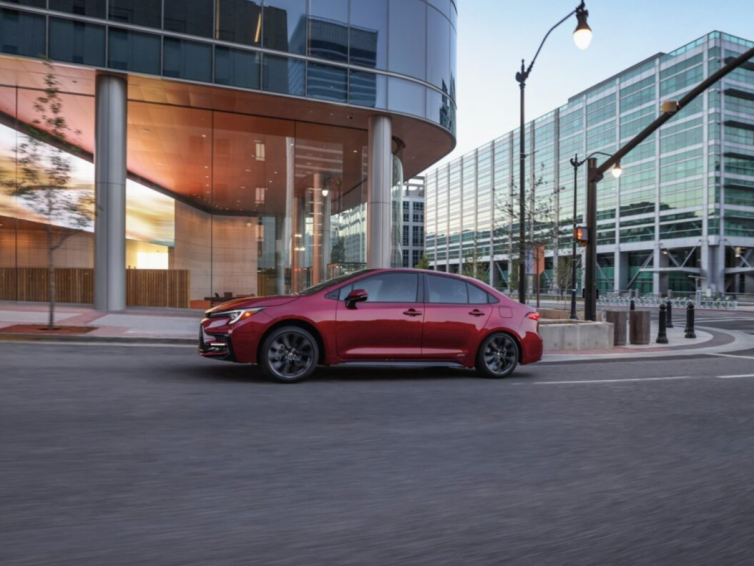
2026 Toyota Corolla Hybrid launched in North America, offering all-wheel drive option
Kevin WongJul 29, 2025
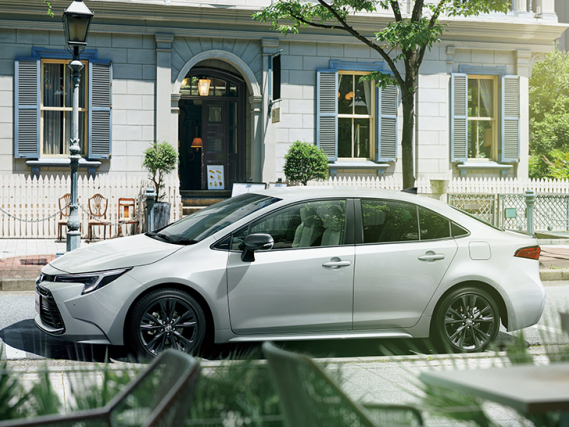
Toyota has Launched a Revamped Version of Corolla in Japan, No Longer Sell Gasoline-Powered Corolla
Kevin WongMay 12, 2025
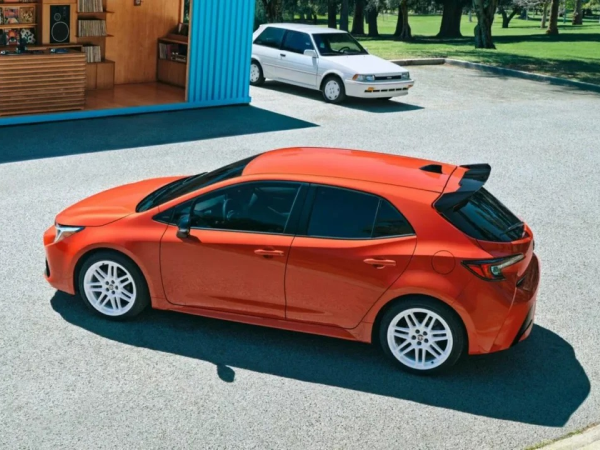
Toyota Plans to Launch 2026 Corolla Hatchback FX: A Nod to the 1987 FX16
WilliamMay 9, 2025
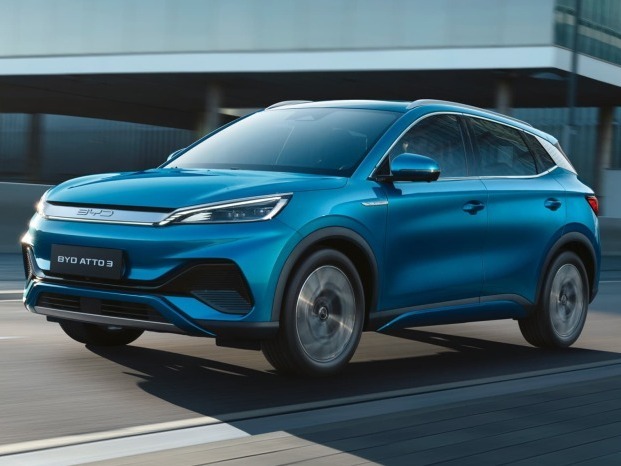
Tesla's sales champion was taken away by BYD, Model 3 and Model Y lost their sales position in multiple regions
AshleyFeb 26, 2025
View More



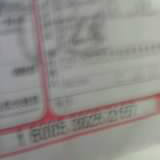








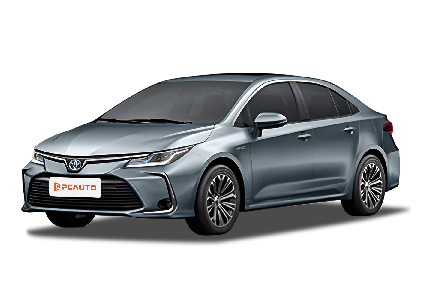





Pros
Cons